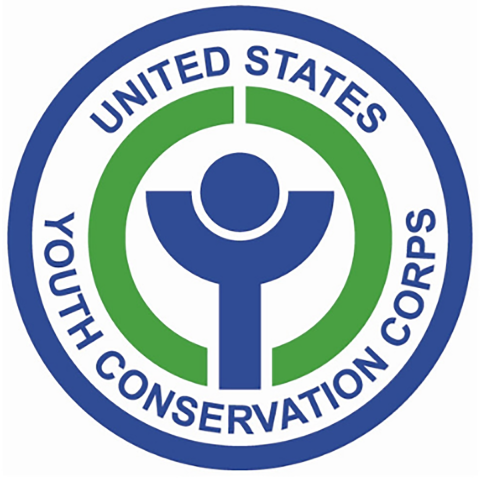Ways to Get Involved
Whether you want to further conservation, learn more about nature or share your love of the outdoors, you’ve come to the right place. National wildlife refuges provide many opportunities for you to help your community by doing what you love. National wildlife refuges partner with volunteers, youth groups, landowners, neighbors and residents of urban and coastal communities to make a lasting difference. Find out how you can help make American lands healthier and communities stronger while doing something personally satisfying.
Volunteering
Discover for yourself what tens of thousands of volunteers have learned: Volunteering for the U.S. Fish and Wildlife Service is fun and rewarding in many ways. Learn new skills, meet new friends and enjoy a sense of accomplishment from doing your part to further wildlife conservation for the pleasure of generations to follow. Learn more about volunteer opportunities on the district by visiting volunteer.gov.
Windom Wetland Management District is always seeking new volunteers to help with maintenance activities, biological surveys, and outreach events. Stop by and visit with one of our friendly staff to see how you can help out.
Want to make a lasting impact on District lands? Consider joining the Friends of Windom Wetlands! Our Friends group is actively seeking new members and would love to hear from you.
Our Partners
Nature does not recognize human-made boundaries. In order to conserve our natural and cultural resources effectively, we must work with others to bridge these boundaries. Partnerships foster creative solutions to challenging situations and often the results are greater than the sum of the parts.
Partners for Fish and Wildlife
We partner with private landowners! The U.S. Fish and Wildlife Service has a program called Partners for Fish and Wildlife, which helps private landowners conduct all the same resource management actions used on waterfowl production areas on their own land.
The Partners for Fish and Wildlife Program provides technical and financial assistance to solve land management problems, identify partners, and coordinate restoration work on private lands.
The Partners for Fish and Wildlife Program in southwest Minnesota concentrates on restoring degraded wetlands, native grasslands and riparian riparian
Definition of riparian habitat or riparian areas.
Learn more about riparian stream and river habitat for migratory birds, endangered and threatened species, and fishes.
Restoration costs may be shared by any combination of governmental agencies, private organizations, and the private landowner. Cost-effective restoration projects that provide the greatest fish and wildlife benefit for the least money are most likely to receive attention from the Partners program. The landowner must commit to maintaining restored habitat for a minimum of ten years.
If you live in southwest Minnesota and are interested in habitat restoration, please contact us!
Friends of Windom Wetlands
Many refuges and wetland management districts have private, voluntary support groups known as a Friends group. The Friends of Windom Wetlands are committed to community stewardship of the Windom Wetland Management District through preservation, restoration, promotion and education. Their goal is to inform the public about the benefits of the Windom Wetland Management District, and to provide opportunities for volunteers.
Our friends group is actively seeking new members. Friends of Windom Wetlands meets on the first Wednesday of each month beginning at 7:00 p.m. at the Wings on the Prairie Discovery Center. For more information, contact the district at 507-831-2220 or windomwmd@fws.gov.
Friends members are invited to special events, including their annual meeting and celebrations, and have the opportunity to learn about and enjoy our prairie wetlands through hiking, nature trails, bird watching and hunting. Members help with public awareness about the wetlands, expand opportunities for public use of waterfowl production areas, create sites for observation and photography of birds and other wildlife. They also support restoration and preservation of the wetlands and prairies, maintain hiking trails and promote hunter education and safety. Members are also regarded as people who sincerely are concerned about the district wetlands.
Our Many Partners
We couldn't accomplish our work without the help from others. These partners include:
- Brandenburg Prairie Foundation
- Ducks Unlimited
- Heron Lake Watershed District
- Jeffers Petroglyphs Historic Site
- Luverne Area Chamber of Commerce
- Minnesota Department of Natural Resources
- Murray County Economic Development
- North Heron Lake Game Producers Association
- Pheasants Forever
- Prairie Ecology Bus Center
- The Nature Conservancy
- Windom Area Chamber of Commerce
Education Programs
Open the door to a potentially life-changing experience. If you land a student internship, a fellowship or a volunteer opportunity at a national wildlife refuge national wildlife refuge
A national wildlife refuge is typically a contiguous area of land and water managed by the U.S. Fish and Wildlife Service for the conservation and, where appropriate, restoration of fish, wildlife and plant resources and their habitats for the benefit of present and future generations of Americans.
Learn more about national wildlife refuge , fish hatchery or other U.S. Fish and Wildlife Service site, you’re bound to come away with new insights and excitement about conservation.
Windom WMD hosts a Youth Conservation Corp (YCC) every summer. YCC is designed to give local high schoolers an opportunity to dabble in natural resources management. Young men and women ages 15 to 18 are eligible to apply and help protect and restore native habitats in Southwest Minnesota.
The YCC crew will work on several projects throughout the Windom WMD including:
- Nature trail, observation deck and boardwalk maintenance
- Goose banding with the MNDNR, local bird monitoring and wildlife surveys
- Fence and debris removal on Waterfowl Production Areas
- Native Prairie management by removing invasive weeds and small trees
- Environmental education, interpretation, and community service
- Parking area construction and maintenance on WPAs and other general maintenance activities
- Care and maintenance of pollinator gardens at the district headquarters
Have questions or would like to apply? Contact Todd Hauge (507-831-2220 ext 12) in early April.
Participants will perform hard physical work and may be exposed to insects, poison ivy, adverse weather, and difficult working conditions.

